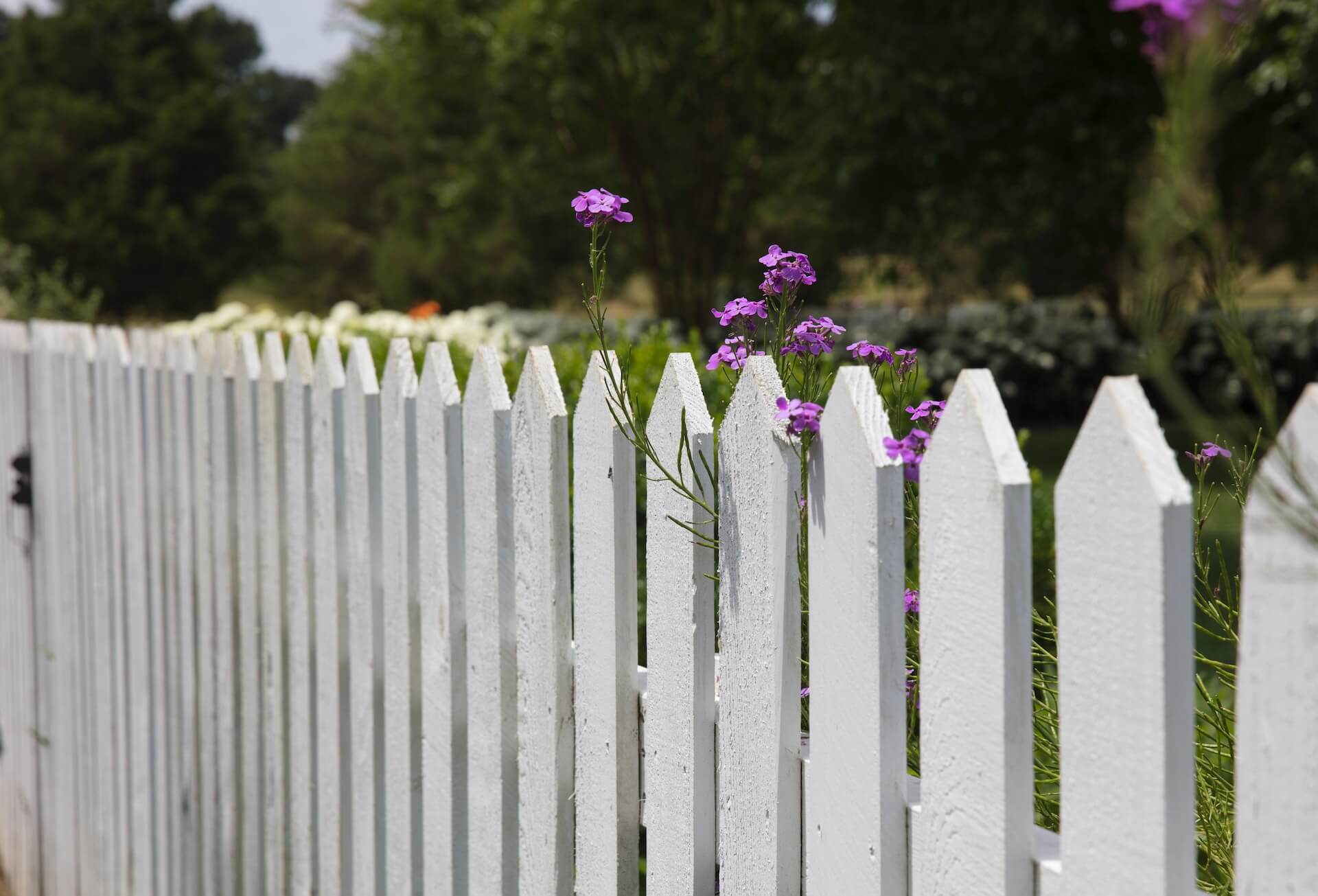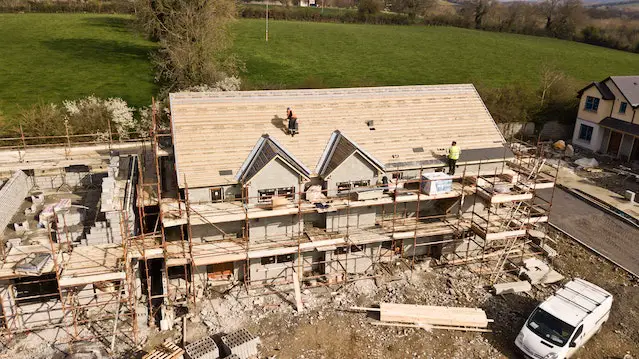Boundary fences play a crucial role in maintaining privacy and security among neighbours. Everyone wants to feel a sense of privacy in their garden and neighbour fence disputes are common when these boundaries are compromised. ‘My neighbour’s fence is too low’ is a common query and this blog should hopefully answer all of your questions.
Boundary fences serve as more than mere physical barriers; they provide a sense of personal space, define property lines, and contribute to the overall aesthetics of your garden. They are an essential aspect of residential living, offering privacy from prying eyes, deterring trespassers, and creating a peaceful environment to enjoy our homes.
At Nuisance Neighbours, I believe in fostering positive relationships and resolving disputes amicably.
My aim is to provide you with valuable insights, guidance, and practical solutions to address the issue of a neighbour’s low fence.
Understanding Boundary Fences in the UK
Boundary fences in the UK are subject to regulations and guidelines that aim to maintain order, ensure privacy, and promote good neighbourly relations.
It is essential to have a clear understanding of these regulations to navigate any issues related to low fences and their impact on your property.
- Regulations and Guidelines: In the UK, regulations regarding boundary fences are primarily governed by common law and local planning authorities. While specific regulations may vary depending on your local council, there are general guidelines that apply nationwide. These guidelines dictate the height, materials, and maintenance of boundary fences.
- Typical Height Requirements: Residential fences in the UK typically have a height requirement of around 1.8 meters (6 feet). This standard height is designed to strike a balance between privacy and maintaining an open and welcoming garden. However, it’s important to note that local regulations and property-specific restrictions may alter this standard.
- Reasons behind Height Standards: The height requirements for boundary fences serve several purposes. Firstly, they ensure privacy by preventing direct line-of-sight into neighbouring properties, allowing individuals to enjoy their personal spaces without feeling exposed. Secondly, taller fences deter potential intruders and provide a sense of security for homeowners and residents. Lastly, maintaining uniform fence heights within a neighbourhood helps maintain a consistent aesthetic appeal and property values.
- Importance of Maintaining Proper Boundaries: Proper boundaries are crucial for maintaining privacy, security, and relationships with your neighbours. A well-defined boundary helps establish a sense of ownership and respect for personal spaces, reducing the likelihood of disputes and misunderstandings.
Unfortunately, there is no general guideline that states your neighbour must have a fence over a certain height. However, you are well within your right to put up a boundary fence adjacent to your neighbour’s low fence, as long as the new fence is on your land.
You may be shocked to hear that in the UK you can’t enforce your neighbour to even have a fence at all between the boundaries unless the lack of fence is causing a health and safety issue.
If your neighbour has removed the boundary fence completely then I have a separate article that you can read here.

Issues if your Neighbour’s Fence is Too Low
When a neighbour’s fence is too low, it can give rise to several specific issues that affect your daily life and the overall atmosphere in your garden.
Let’s delve into these impacts in more detail:
- Loss of Privacy: One of the primary concerns with a low fence is the loss of privacy. A fence serves as a barrier that separates your property from your neighbour’s, providing a sense of personal space and seclusion. When the fence is too low, it fails to adequately screen your activities from view, allowing neighbours or passersby to observe and potentially intrude upon your privacy. This can make you feel exposed and uncomfortable in your own home.
- Safety Concerns: A low fence can also pose safety concerns. A higher fence acts as a deterrent to potential intruders, making it more difficult for them to access your property. When the fence is too low, it becomes easier for unauthorised individuals to climb over and enter your premises, compromising your safety and security. This can also be an issue if you have a dog that can jump over the low fence.
- Impact on Property Value: The presence of a low fence can have an impact on the value of your property. Fences are considered an important element of a home’s exterior, contributing to its overall appeal and marketability. A low or poorly maintained fence may give the impression of neglect or detract from the aesthetic appeal of the property. This can potentially affect its value when it comes time to sell or rent the property.
- Aesthetics of the Area: A neighbourhood with a consistent and visually appealing aesthetic is desirable for all residents. A low fence may disrupt the overall visual harmony and cohesion of the area, especially if neighbouring properties have appropriately sized fences. The mismatched appearance can detract from the attractiveness and charm of the neighbourhood, affecting the overall enjoyment and pride of residents.
I lived in a house with a very low fence and the main issue I faced was my needy neighbour wanting to talk every single time I stepped out into the garden. On a Saturday morning, I couldn’t have a cup of tea outside without a 45 minute conversation.
Overall, a low fence can lead to the loss of privacy, potential safety concerns, a negative impact on property value, and a disruption in the aesthetics of the area.
It is important to address these issues to maintain a comfortable, secure, and visually pleasing living environment.
You may also be interested in the following:
- What is the Legal Height of a Hedge Between Neighbours?
- My Neighbour’s Garden Is An Eyesore! What Can I Do?
- Trash Talk: How to Handle Neighbours Putting Rubbish in Your Bin
- Neighbour’s Garden Full of Dog Poo UK: What to Do
Approaching the Neighbour about the Low Fence
When it comes to addressing the issue of a low fence with your neighbour, the first thing to do is to communicate with your neighbour.
It’s essential to approach the situation with respect, empathy, and a desire to find a mutually acceptable solution.
Here are some tips and advice on how to initiate a constructive conversation:
Choose the Right Time and Place:
Select an appropriate time to approach your neighbour, ensuring that they are likely to be available and receptive to a discussion.
Consider their schedule and find a calm moment when both of you can focus on the matter at hand.
It’s also important to choose a neutral and private location, such as their doorstep or a shared outdoor space, where you can talk without distractions.
Be Respectful and Calm:
Approach the conversation with a respectful and calm demeanour.
Start by acknowledging your neighbour’s perspective and their right to use and enjoy their property.
Use non-confrontational language and avoid accusatory statements that may escalate tensions. Emphasise that you are seeking a resolution that benefits both parties.
Express Your Concerns:
Clearly and honestly express your concerns about the low fence and how it affects your privacy and security.
Use “I” statements to convey how you feel and the impact it has on your daily life.
For example, instead of saying, “Your fence is too low,” you can say, “I’ve noticed that the current fence height doesn’t provide the privacy I need for my family.”
Propose Solutions:
Instead of solely focusing on the problem, offer potential solutions that could address the issue effectively.
This demonstrates your willingness to find a compromise. For instance, you could suggest adding height extensions, trellises, or decorative panels that maintain the aesthetics of the existing fence while increasing privacy.
Proposing alternatives shows that you are open to working together to find a mutually acceptable solution.
Active Listening:
Allow your neighbour to express their perspective.
Listen attentively and show empathy towards their concerns. By actively listening, you can better understand their reasons for the low fence and work towards finding common ground.
This also helps build trust and encourages open dialogue.
You could follow up by sending a letter to your neighbour and I have a blog on how to write a complaint letter to your neighbour that should help.
Remember, open communication is key to resolving issues related to a low fence.
By approaching your neighbour respectfully, expressing your concerns, proposing solutions, and actively listening, you increase the chances of finding a mutually acceptable resolution.

Mediation and Legal Options for Neighbour Fence Disputes
In some cases, despite your best efforts to communicate and find a resolution, a disagreement with your neighbour regarding a low fence may persist.
In such situations, it may be necessary to explore mediation or legal options to address the issue effectively. Here’s an overview of what you can consider:
Mediation
Mediation is a voluntary and confidential process that involves the assistance of an impartial third party to help facilitate communication and reach a mutually agreeable solution.
Mediation can be a useful option for resolving neighbour disputes, including those related to fence height.
A trained mediator will work with both parties to identify their interests, facilitate constructive dialogue, and help find a compromise.
Many local councils and community mediation services offer mediation services for neighbour disputes.
I have a blog on using mediation to resolve neighbour disputes that you can read here.
Contacting Local Authorities
If mediation proves unsuccessful or is not a viable option, you may consider contacting your local authorities, such as your local council or planning department.
They can guide you on the specific regulations and guidelines governing boundary fences in your area.
They may also be able to conduct an assessment and determine whether the neighbour’s low fence violates any applicable regulations. However, it is very unlikely that they will be able to do anything.
Seeking Legal Advice
In certain situations, seeking legal advice from a solicitor who specialises in property or neighbour disputes may be necessary.
A solicitor can help you understand the applicable laws and regulations, assess the strength of your case, and provide advice on the best course of action.
Please note that the legal process can be complex and may vary depending on the jurisdiction and circumstances of the dispute.
Disputes regarding a neighbour’s low fence will rarely be severe enough to warrant paying for legal advice but it may be appropriate if there are health and safety concerns or your neighbour has damaged your fence.
Remember, mediation and legal options should be considered as a last resort when all other attempts to resolve the issue have been exhausted.
It is always advisable to approach the situation with a willingness to find a mutually acceptable solution through communication and compromise.

Alternative Solutions
Before resorting to legal action, it’s important to explore alternative solutions and compromises that can address the issue of a low fence.
These options can promote understanding and help improve the issue. Consider the following possibilities if your neighbour’s fence is too low:
Adding Height Extensions
One potential compromise is to suggest adding height extensions to the existing fence.
This can be achieved through various methods such as attaching trellises or lattice panels on top of the fence. Amazon has some nice-looking trellises such as this one.
Just make sure you get your neighbour’s permission before you attach this.
These additions can increase privacy without significantly altering the overall appearance of the fence.
Planting Hedges or Trees
Another option is to propose planting hedges or trees alongside the fence to enhance privacy.
Dense, well-maintained hedges or strategically placed trees can act as natural barriers, providing visual screening and additional security.
Laurel is a really good option as it is evergreen and has large leaves to create privacy.
Decorative Panels, Screens or a New Fence
Suggesting the use of decorative panels, such as this bamboo one or screens is another way to address the issue.
These panels can be installed strategically to increase privacy while adding an aesthetic element to the fence.
There are various designs and materials available, allowing for customisation to suit both parties’ preferences.
The other option you have is to put up your own taller fence on your land. Your neighbour can’t stop you doing this, as long as you are not breaching any regulations.
Shared Costs
If the cost of implementing solutions falls solely on one party, it may create an imbalance.
Discuss the possibility of sharing the costs of modifying the fence to address privacy concerns.
This shared responsibility demonstrates a willingness to work together towards a fair resolution.
If you want some privacy then it may be worth stomaching the cost.
Focus on the Bigger Picture
Remember that a low fence issue is just one aspect of your relationship with your neighbours.
Keep the bigger picture in mind, considering the overall importance of maintaining good neighbourly relations.
There is further information on Citizens Advice that you can read here.
‘My Neighbours Fence is Too Low’: Final Thoughts
In this blog, I have explored the issue of a neighbour’s low fence and its potential implications.
I hope this blog has answered your query ‘My neighbour’s fence is too low‘.
In conclusion boundary fences play a crucial role in maintaining privacy, security, and good neighbourly relations in the UK.
When faced with a neighbour’s low fence, it is important to approach the situation proactively and with an open mind.
By engaging in respectful communication, seeking compromises, and exploring alternative solutions, it is possible to find a mutually agreeable resolution.
Remember, the goal is to foster positive relationships and create a harmonious living environment.
By working together and considering each other’s perspectives, we can address the issue of a low fence while maintaining a strong sense of community and neighbourly cooperation.





Leave a Reply